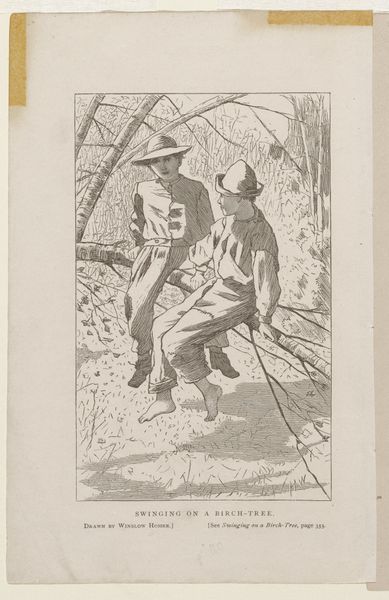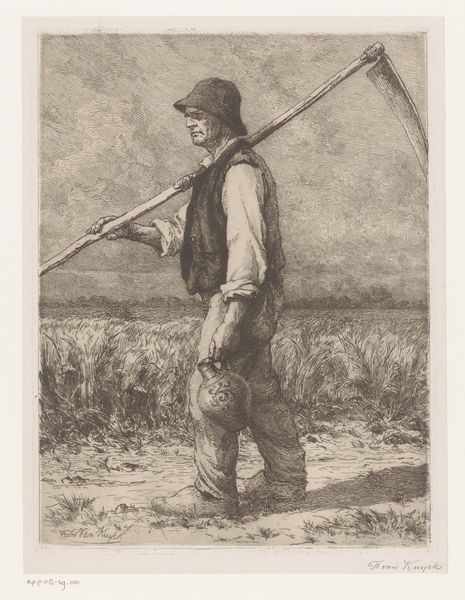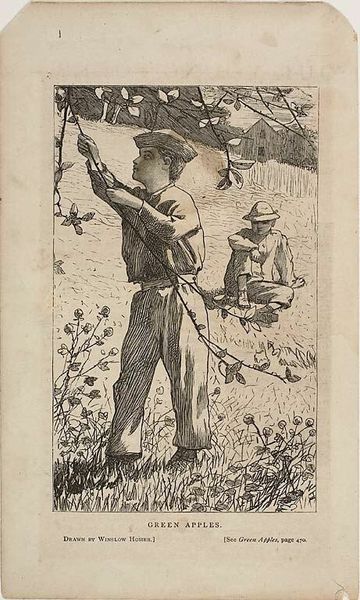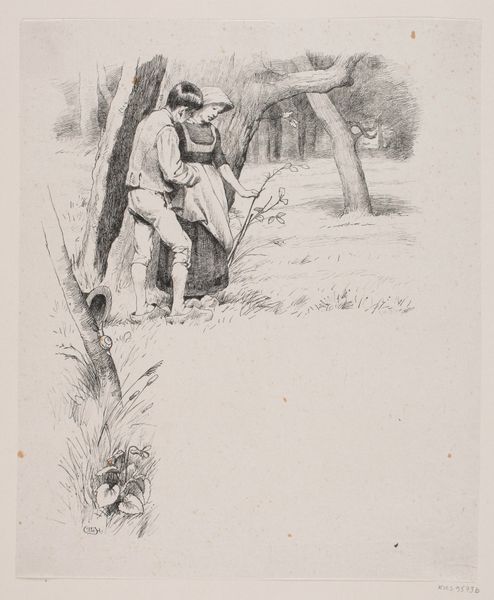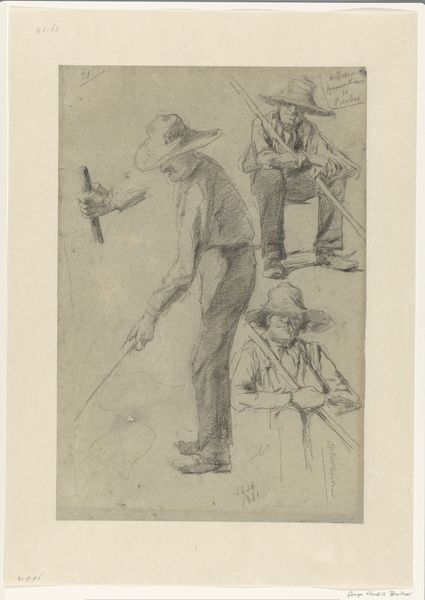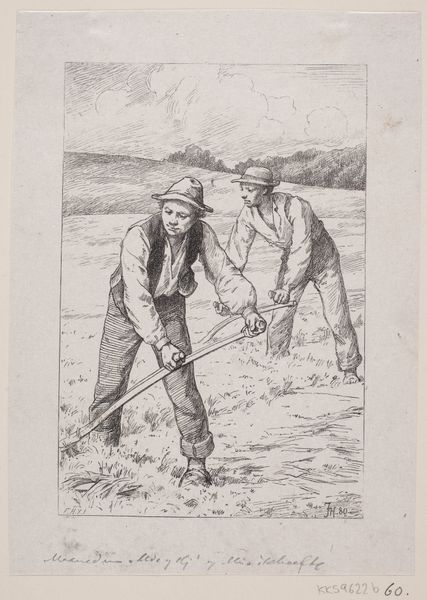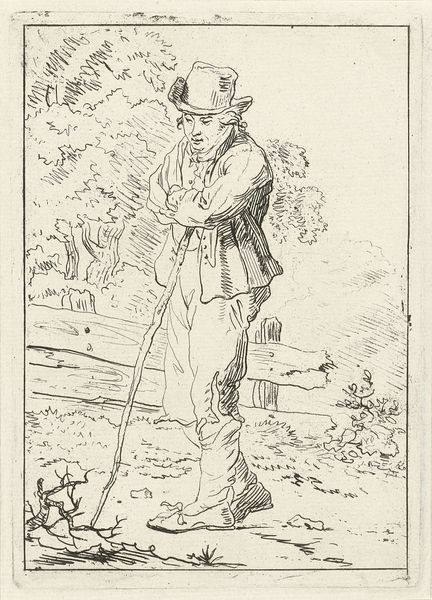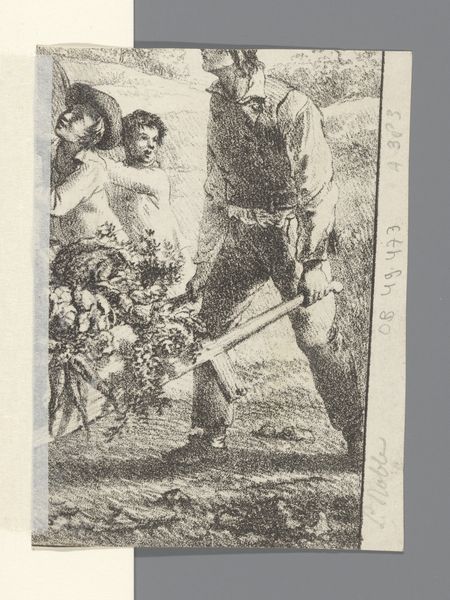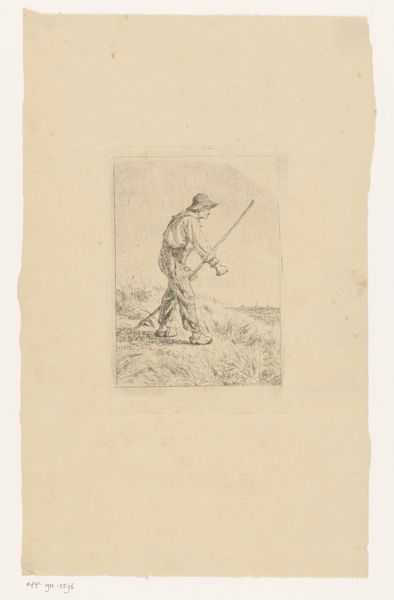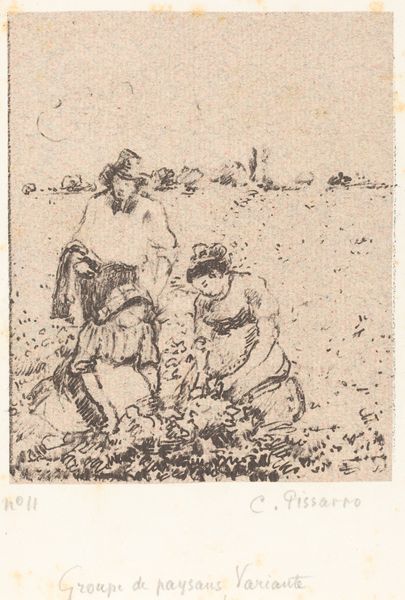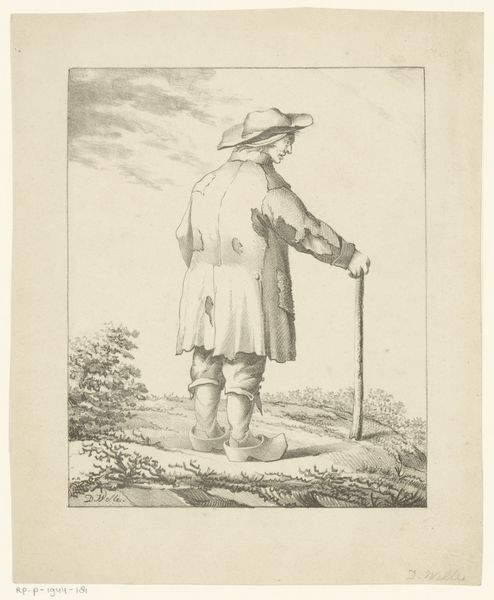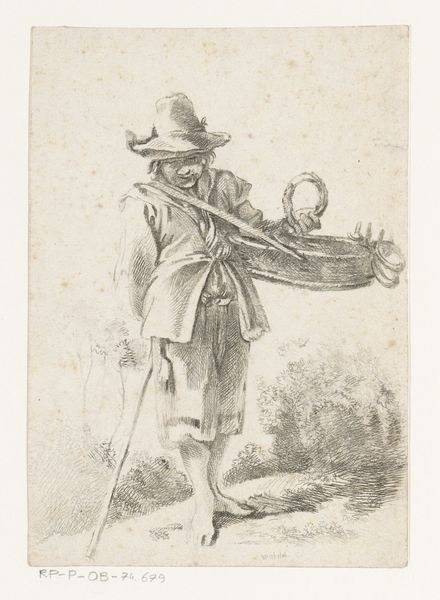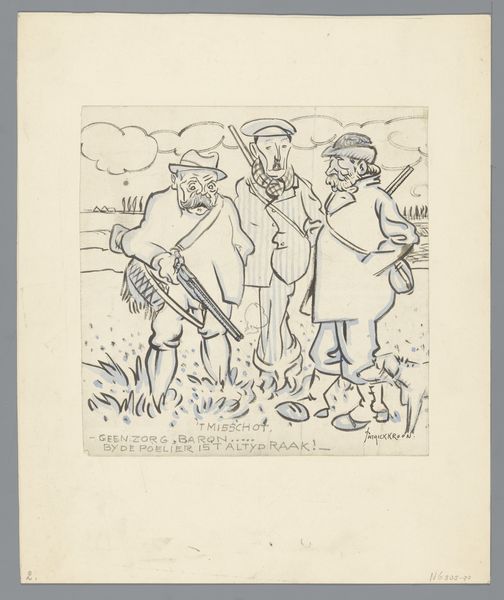
drawing, print, paper, woodblock-print, woodcut, wood-engraving
#
drawing
# print
#
landscape
#
paper
#
woodblock-print
#
woodcut
#
genre-painting
#
wood-engraving
#
realism
Dimensions: 5 7/8 x 3 5/8 in. (14.9 x 9.2 cm)
Copyright: Public Domain
Curator: Alright, let's talk about Winslow Homer's "Green Apples." It's an 1868 wood engraving, a print on paper, residing here at the Minneapolis Institute of Art. Editor: First thought? It feels incredibly wistful, almost melancholic, despite the youthful subjects. The scratchy lines give it a texture that's both delicate and a bit raw. Like a faded memory. Curator: I think you've hit on something important there. Homer was working as an illustrator for magazines like "Harper's Weekly" at the time. These weren’t meant to be timeless masterpieces, but immediate, relevant images reflecting contemporary life. In this instance it seems to depict kids doing kid things during the apple harvest. Editor: Harvest, right! Though there's an interesting duality—one boy seems really determined to grab something from the higher branches while the other is just... sitting there. Curator: Definitely. The composition places the active boy in the foreground, almost like he's reaching for a future, maybe even an unattainable goal, represented by those high apples. The seated figure, by contrast, embodies quiet contentment, settling with what's readily available, or is merely contemplating the landscape. Editor: It also tells a certain story of boyhood. The labor and then rest of labor is here. I wonder, too, about that texture again. Is that roughness purely a result of the wood engraving process, or does it reflect something deeper? Like the often-uncomfortable experience of growing up during that time? Curator: Good question! There’s always going to be something of the industrial baked into this process—these images were meant to be widely disseminated in a democratic gesture of the proliferation of image making—But it also mirrors a nation undergoing intense change, fresh off the civil war. The etching embodies an element of disquiet that would soon fade once etching styles changed along with a newly forming American ethos of productivity, leisure, and technological development. Editor: Thinking about those contrasts, I'm reminded that what appears as simplicity—boys, apples, landscape—is layered with emotions and commentary about where we find ourselves in our life journey and American experience, as if Homer, with each scratch of his tool, wanted us to question simple pleasure of an American pastime like going out to pick apples. Curator: And perhaps those tart green apples represented something as-yet-unripe for the burgeoning American soul as it strove to remake itself! Well, thanks for helping to unlock those perspectives on this image. Editor: Thank you; I'm taking with me new eyes and thoughts for simple afternoons in an apple orchard.
Comments
No comments
Be the first to comment and join the conversation on the ultimate creative platform.
